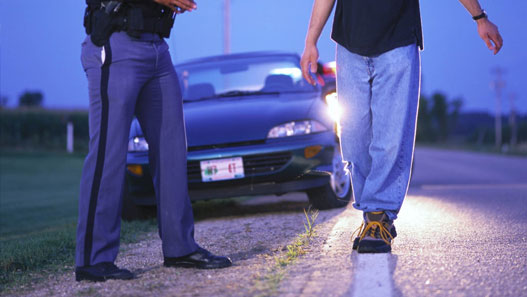
What Is Included In a Sobriety Test and What is Admissible?
If a person is pulled over by the police and asked to take Standard Field Sobriety Test (SFST), what will they be expected to do? Which parts of a sobriety test are admissible in court? These are questions that concern many people who are charged with DUI. A criminal defense attorney can help you understand the facts about a field sobriety test as well as the admissibility of any evidence that may be collected from one of these tests.
What Is An SFST?
A SFST is made up of three different tasks that a person must complete successfully in order to show that he or she is not driving impaired. Trained officers who use the SFST are alleged to correctly identify impaired drivers 90 percent of the time. All fifty states, with the exception of Ohio, allow the results of SFST’s to stand up in court. There are three different parts to a standard SFST. First, the horizontal gaze nystagmus (HGN) test looks for involuntary jerking of the eyes when a person is using their peripheral vision. Most people will jerk their eyes when looking to the side at a high angle. However, tests have shown that people who are impaired will have the same jerking movements when looking at a lower angle. The police officer will look for eye movements that cannot follow a moving object smoothly, distinct jerking when the eye is looking to the side, and the angle at which the eye starts to jerk. If all three of these indicators are present, studies have shown that 77 percent of the time a person has a Blood Alcohol Concentration (BAC) of .10 or higher. Next, the “walk and turn” test gauges a driver’s ability to follow simple directions and to keep his or her balance. The driver is asked to take nine heel-to-toe steps, pivot on one foot, and return in the same manner. If the person is having trouble following these directions, uses hands and arms to balance, or cannot pivot without losing balance, studies have shown that there is a 68 percent chance that the person has a BAC of .10 or higher. The final test administered during the SFST is the “one-legged stand” test. During this test, motorists are asked to stand on one foot for thirty seconds while keeping the other foot six inches off the ground. If a person needs to use hands or arms for balance, sways while balancing, hops or puts a foot down, this indicates 65 percent of the time that the driver has a BAC of .10 or higher. Officers look at all three tests to determine if a driver is impaired while driving. The officer’s discretion of DUI based on these tests is admissible in court. However, the HGN test has been determined not to be valid if an officer did not properly execute the test and is not properly trained in administering test. If you have been stopped and administered the SFST test for DUI in the Arizona area, contact the Oswalt Law Group. With extensive experience in DUI cases, the attorneys at the Oswalt Law Group can help defend your DUI case. They understand the unique Arizona DUI laws and have experienced criminal defense attorneys in the Phoenix, Arizona, area. Call them today for a free consultation.
